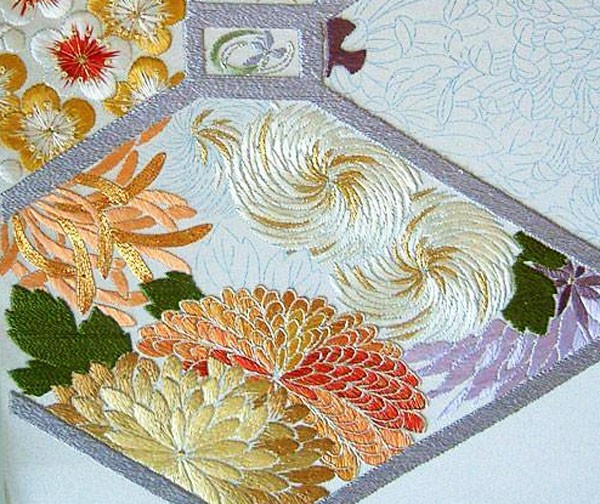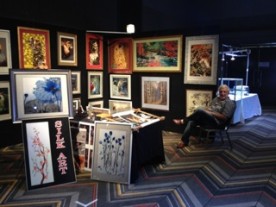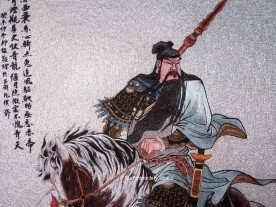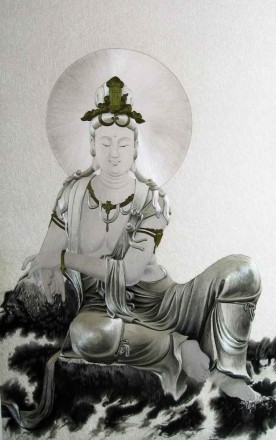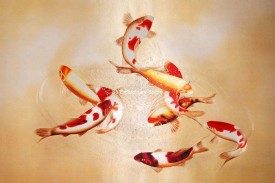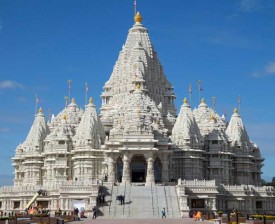Embroidery is a centuries-old art form that has been cultivated and perfected in different cultures around the world. Two notable styles of embroidery, Suzhou embroidery from China and Japanese embroidery from Japan, offer intriguing insights into the cultural and artistic distinctions between these two nations. While both share a common thread of creativity, they exhibit distinctive characteristics that set them apart.
Origins and Influences
Chinese Suzhou Embroidery: A Chinese Legacy
Suzhou embroidery, also known as Su embroidery, is a renowned form of traditional Chinese needlework. Its origins can be traced back to the ancient Wu-Yue region, encompassing present-day Suzhou and Hangzhou. Legend has it that people in this region adopted the practice of short haircuts and body patterns to ward off malevolent dragons. Over time, these intricate patterns found their way onto clothing through the art of embroidery, marking the birth of Suzhou embroidery.
During the Three Kingdoms era, Suzhou embroidery saw significant development. King Sun Quan of Wu commissioned the sister of Prime Minister Zhao Da to hand-embroider the "Diagrams of the Warring States" onto square silk. These intricate patterns depicted landscapes with mountains, rivers, seas, cities, and formations. Suzhou embroidery evolved into a fusion of technique and artistic expression, branching into two distinct directions: everyday necessities and ornamental art.
Japanese Embroidery: Cultural Exchange
Japanese embroidery, or "nihon shishu," has its roots in the cultural exchange between Japan and China during the Sui and Tang dynasties. This period marked significant influences from China, particularly in politics and culture. The "Wu dress" from the Wu-Yue region, now known as Suzhou and Hangzhou, was introduced to Japan and became the formal attire of the Japanese aristocracy. This marked the inception of embroidery in Japan, heavily influenced by Chinese culture. Even today, Japan refers to embroidery and other textiles as "kimono," acknowledging their origin in China's Wu region.
Buy Chinese Silk Embroidery Online
Comparing the Two Styles
As Suzhou embroidery and Japanese embroidery developed independently, they acquired distinct characteristics:
1. Embroidery Techniques
Suzhou embroidery encompasses traditional flat embroidery techniques and modern radom stitching techniques, creating exquisite and intricate designs.
Japanese embroidery distinguishes itself through meticulous dot embroidery and line embroidery, emphasizing precision.
2. Embroidery Content
Suzhou embroidery combines painting and drawing techniques, producing lifelike, ink-and-brushwork-style masterpieces. Common motifs include flowers, animals, and landscapes.
Japanese embroidery predominantly features auspicious motifs like pine, bamboo, plum, animals, and treasures. It often symbolizes nature's beauty and spirituality.
3. Artistic Characteristics
Suzhou embroidery excels in realism, often referred to as "painting with needles" for its lifelike renditions. It captures the nuances of ink and brushwork, creating intricate and vibrant compositions.
Japanese embroidery leans towards expressing an elegant and graceful mood, drawn from Japanese appreciation of nature and refined spirituality. It seeks to evoke a sense of tranquility and harmony.
4. Social Significance
Suzhou embroidery originated from folk culture, serving daily life needs and bearing functional purposes. It was historically used in weddings, celebrations, and various aspects of daily life.
Japanese embroidery began as luxurious attire for the aristocracy, symbolizing the royal and upper classes. Over time, it expanded its reach to other social strata.
5. Development Concepts
Suzhou embroidery has diversified in recent years, embracing modern techniques and materials. It has evolved from daily necessities to high-grade silk artwork, adding complexity and diversity to its repertoire.
Japanese embroidery, too, has modernized while retaining its traditional aesthetics. It continues to evolve with contemporary design and artistic expression.
Custom Portrait Embroidery from Photo
Preserving and Celebrating Folk Art
In the face of globalization and modernization, preserving these rich traditions is paramount. Both Suzhou embroidery and Japanese embroidery offer glimpses into the cultural and artistic legacies of their respective nations. By actively engaging in education, promotion, and international exchange, these two embroidery styles continue to flourish, bridging the gap between tradition and innovation. As they adapt to the times, they serve as cultural ambassadors, reminding us of the enduring beauty of handcrafted artistry.
by Su Embroidery Studio (SES), Suzhou China
SES is dedicated to Chinese Silk Embroidery Art and High-End Custom Embroidery
Find SES's embroidery work at Chinese Silk Embroidery for Sale.


